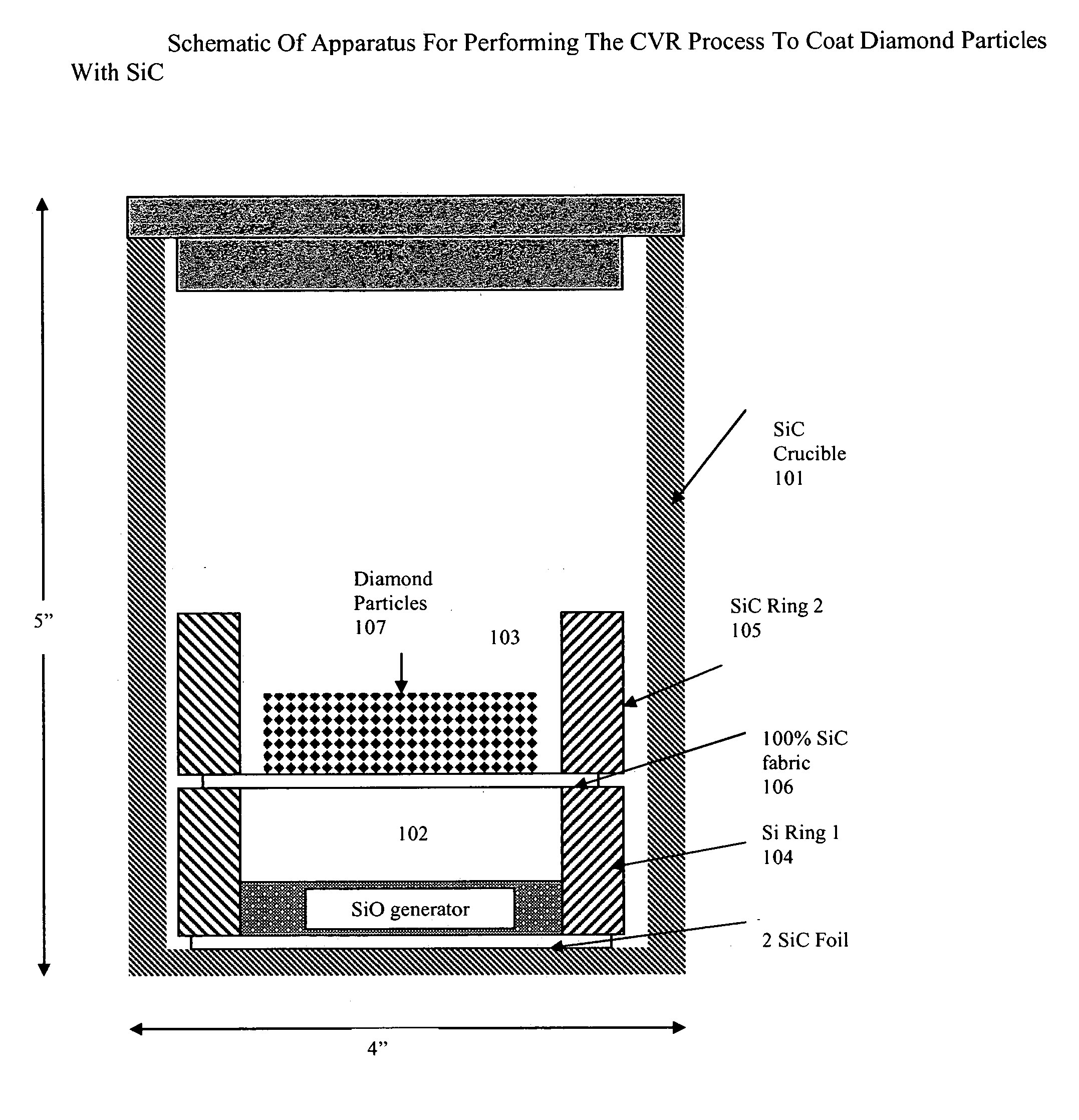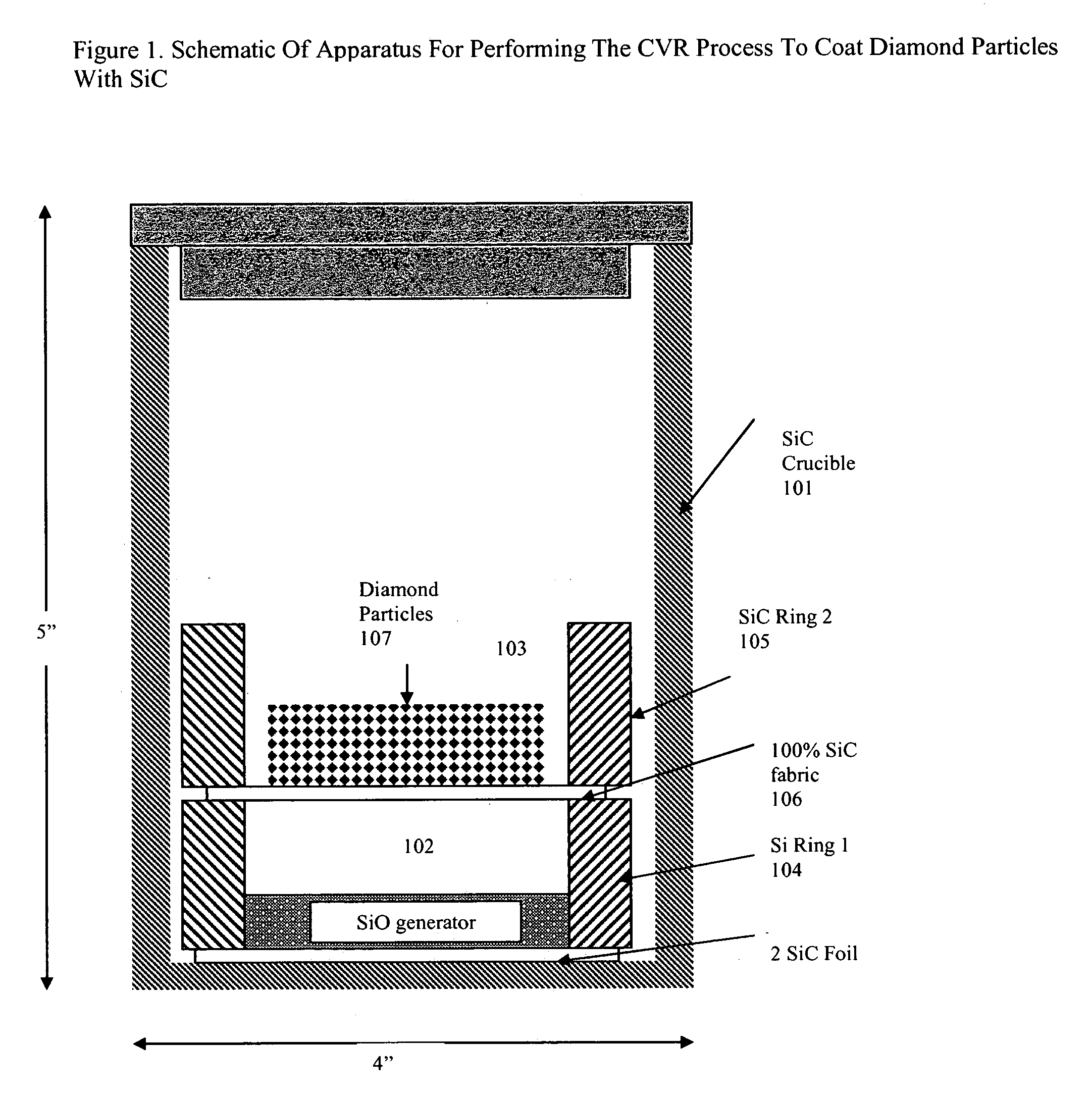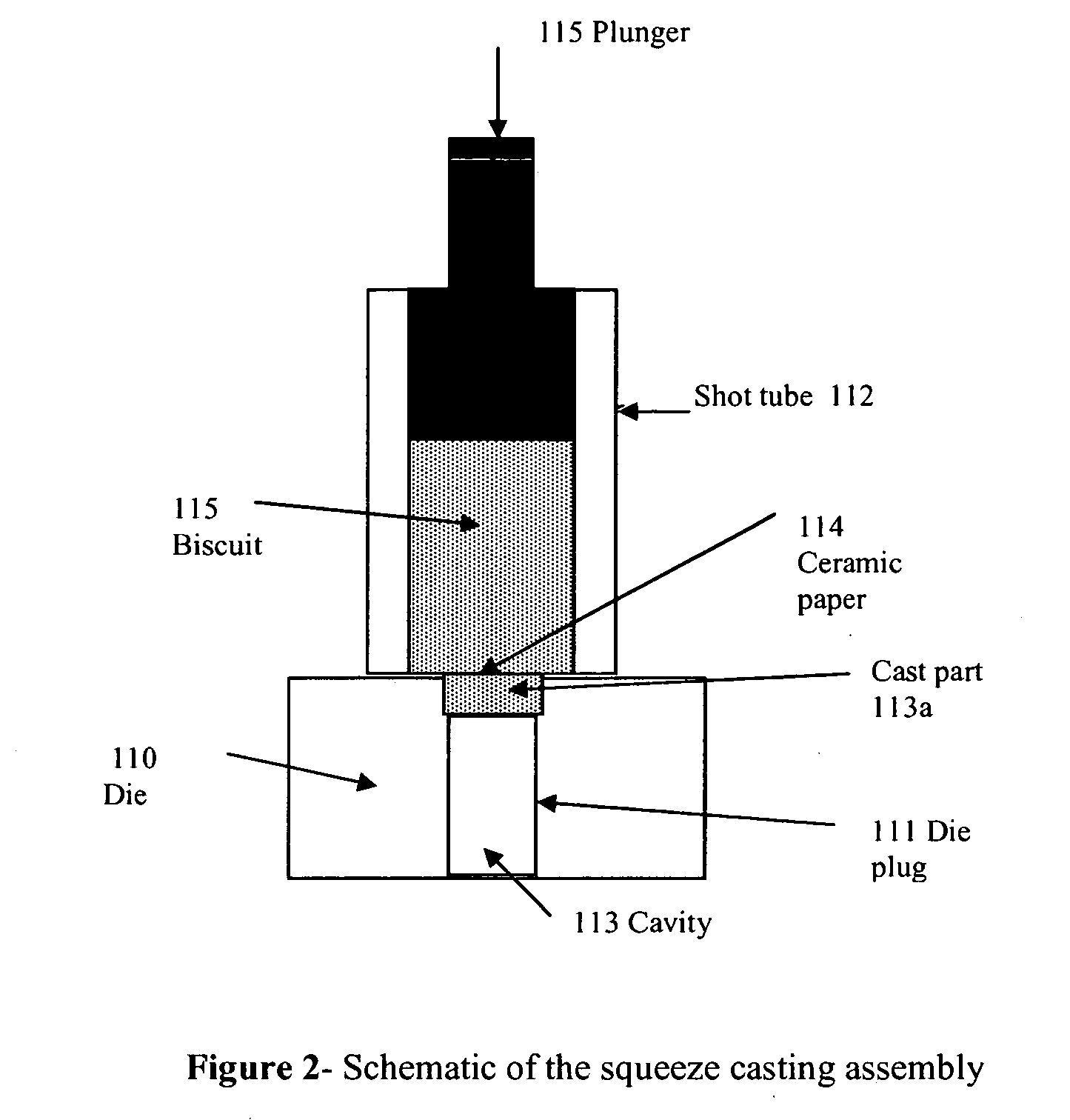High thermal conductivity metal matrix composites
a metal matrix composite and high thermal conductivity technology, applied in the direction of basic electric elements, semiconductor/solid-state device details, transportation and packaging, etc., can solve the problems of large residence time, relatively slow methods, and insufficient thermal conductivity of al/sic mmc's
- Summary
- Abstract
- Description
- Claims
- Application Information
AI Technical Summary
Benefits of technology
Problems solved by technology
Method used
Image
Examples
example 1
An aluminum metal matrix composite having diamond particles dispersed therein was formed by the following method. Loose uncoated diamond powder (Synthetic Diamond from Oshmens Corp.) of size 15-30 microns was placed directly into the die cavity of a tool steel die ( as illustrated in FIG. 2) and shaken to achieve full tap density of 50-55%. Dimensions of the die cavity were 2″×2″×0.25″ The diamond powder bed was covered with a sheet of {fraction (1 / 32)}″ thick high alumina ceramic paper which acts as a filter to remove oxide particles from the melt during infiltration. To avoid entrapment of gases in the die casting, a 0.005″ gap was maintained around the bottom plug in the die to allow trapped air to escape during infiltration. Aluminum metal with a purity of 99.8% was heated to 850 degrees centigrade under Ar cover gas to avoid oxidation. The die was heated separately to a temperature of 650 degrees centigrade, slightly below the melting point of the Al (660 degrees centigrade). ...
example 2
The procedure for forming an aluminum metal matrix composite with uncoated diamond powder described in example 1 was repeated using uncoated 100-120 micron diamond powder.
Laser flash measurement of thermal conductivity on a number of samples produced by a number of casting runs returned values of conductivity in the range of 150-200 W / m.k. Measurement of strength of the composite using 4-point bend rupture yielded an average rupture strength of 17 ksi (average of 6 measurements).
example 3
The procedure for forming an aluminum metal matrix composite with uncoated diamond powder described in example I was repeated using uncoated 0.5-2 micron diamond powder.
Laser flash measurement of thermal conductivity on a number of samples produced by a number of casting runs gave an average value of conductivity of 105 W / m.k. Measurement of strength of the composite using 4-point bend rupture yielded an average rupture strength of 22 ksi
PUM
| Property | Measurement | Unit |
|---|---|---|
| Time | aaaaa | aaaaa |
| Size | aaaaa | aaaaa |
| Particle size | aaaaa | aaaaa |
Abstract
Description
Claims
Application Information
 Login to View More
Login to View More - R&D
- Intellectual Property
- Life Sciences
- Materials
- Tech Scout
- Unparalleled Data Quality
- Higher Quality Content
- 60% Fewer Hallucinations
Browse by: Latest US Patents, China's latest patents, Technical Efficacy Thesaurus, Application Domain, Technology Topic, Popular Technical Reports.
© 2025 PatSnap. All rights reserved.Legal|Privacy policy|Modern Slavery Act Transparency Statement|Sitemap|About US| Contact US: help@patsnap.com



